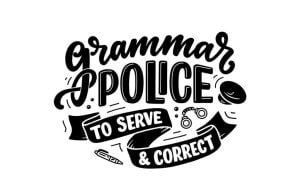Teaching vocabulary in advanced ESL lessons can be a daunting task as much as it can be fun and inspiring. If your student’s language skills really fit the advanced level, they should already have a strong, almost native-like grasp of English, so you naturally want to push them to new levels of understanding and fluency.
C1 students are usually overachievers, so sometimes, it can be hard to quench their thirst for knowledge or find a hole in their vocabulary that needs to be filled. Another problem is that we want our students to have a robust vocabulary, but we also want to make it fun and engaging. This is the reason we’ve decided to share some tips and strategies that will help you teach vocabulary effectively in your advanced ESL lessons.
Encourage reading
One of the best ways to expand your students’ vocabulary is to encourage them to read extensively. Reading helps students encounter new words and understand them in context. This does NOT mean you should spend 60 minutes making your student read Pride and Prejudice aloud. Assigning reading materials that are relevant to your lessons can help you target specific vocabulary words that you want your students to learn. You can also have students create vocabulary lists as they read, which will help them remember and internalize the words.
English4tutors reading activities are short enough to keep both the teacher’s and the student’s attention, yet packed with new vocabulary which is usually followed by explanations and practice.
Use word maps
Word maps are a fantastic visual tool that can help your students see the connections between words. They’re especially helpful when teaching related vocabulary words. If you’re teaching a new word, you might want to start with its well-known synonym and then gradually arrive at the word you want to teach.
Check out some word maps in our C1 lessons Can traveling change who you are? or What’s the shape of this taste?
Use word clouds
Word clouds are a great visual tool you can use to introduce a new topic as well as new vocabulary. We like to keep our word clouds colorful and sassy, with each word having a unique font and color, so that they remain engraved in the student’s memory the exact way they saw it in the word cloud. Visual clues really do facilitate memorizing new things.
Use real-world examples
When teaching vocabulary, it’s important to make it relevant to your students’ lives. Using real-world examples can help your students see how the words they’re learning are used in everyday situations. This is why we incorporated videos in all our lesson plans. The student first hears the new word in context. The important thing is that they see/hear an actual person using it, which actually leaves a visual and/or auditory trace in their memory. Then, they match it with the definition, use it in a sentence, and the same word sometimes comes up once or twice more by the end of the lesson, usually in a discussion. And there you have it! The new word has been successfully stored in your student’s brain’s English compartment!
Games
Games can be a fun and engaging way to teach vocabulary. There are a variety of vocabulary games you can play with your student.
For example, to introduce or practice new vocabulary, you can play crosswords with your student. They will have definitions provided and the letter clues will appear as they add words.
Another great interactive activity for practicing new vocabulary is roleplay. The student gets a chance to put themselves in a situation where they are forced to apply the new vocabulary in the right context and use it in conversation. Rest assured that vocabulary practiced this way will stay with your student forever.
In conclusion, teaching vocabulary in advanced ESL lessons can be a challenge, but it doesn’t have to feel like pulling teeth. So, go ahead! Try one (or more) of our tips and turn your students into word wizards!





